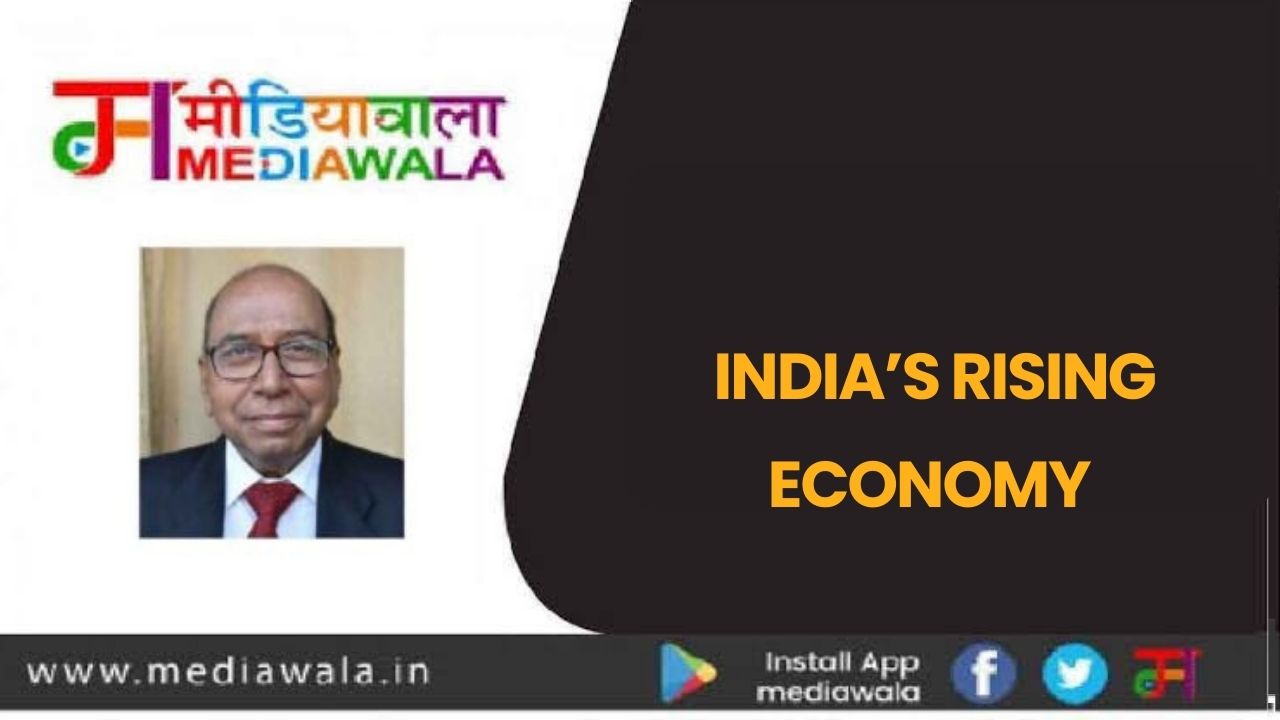
India’s Rising Economy
After a lot of action and din of elections in five states, it is time to wade into the economic status of our country. The GDP growth of 7.6% in September of this fiscal year has startled financial regulators, national and international economists. The projected growth by RBI for this quarter was only 6.5%, nearly 1% less than the actual growth. This 1% more growth than the projected growth shows the resilience of Indian economy. . The highlights of the data are growth of 13.9% in manufacturing to Rs 7.15 lakh crore, construction increasing by 13% to Rs 3.04 lakh crore and investment rising 11% to Rs 14.71 lakh crore.
Share market has crossed $4 trillion mark, making India only the fourth country to record this level of valuation. As a percentage of GDP, it exceeded 100%. Market capitalisation to GDP ratio is a widely tracked measure of valuation. The US, having a strong base of technology has market capitalisation to GDP Ratio above 100%. The present ratio of above 100% in India shows that its all macro economic factors are strong and pulling the market with it. Of greater relevance here is recent research that identifies the primary reason for the increase in market capitalisation to the confidence on India’s GDP growth that has driven FPI (Foreign Portfolio Investor) investments into India. The structural shift in the ratio of market capitalisation to GDP was influenced mainly by a shift in profit in major economies to companies listed on stock exchanges. Market capitalisation GDP ratio, therefore, reflects deep economic transformation.
The collection of GST in the last month rose to ₹ 1.68 lakh crore- up 15.1% over the same month last year. Significantly corporate tax increased by 20% during April to September this year. The robust tax collection in India can be understood in the background of more spending by the central and state governments. The central government has reduced its fiscal debt and allotted more for capital expenditure boosting the infrastructure. In spite of social sector spending and freebies, the major states of India have spent 47% in capital expenditure in first half of this fiscal year. This favourable economic environment has accelerated people’s saving in Mutual Fund to 2.5 times at Rs 1.6 lakh crore.
According to Periodic Labour Force Survey Annual Report, India’s unemployment rate for individuals aged 15 and above reached a six-year low of 3.2 per cent during the period from July 2022 to June 2023.
In spite of this economic scenario being in good trim, India is a poor country. It’s per capita income is near the bottom quarter of the world. Human indices, specially in health, are very weak. Education standards are dismal and opportunity for skill development are still not easily available. The administrative chaos in states like Bihar, Jharkhand pull the country downward. India has to grow along with other regions. 70% of India’s economically lower population increases its income very slowly as compared to upper 30%. A rising India has to find its solution for inclusive development.







